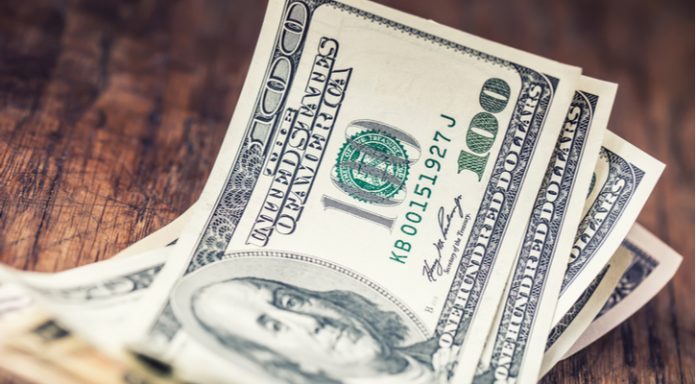A more hawkish Bank of England (BoE) sent the pound surging versus the US dollar on Thursday. The pound US dollar exchange rate charged through US$1.32 to a high of US$1.3270. This is the highest that the rate has traded in very long.
| What do these figures mean? |
|---|
| When measuring the value of a pair of currencies, one set equals 1 unit and the other shows the current equivalent. As the market moves, the amount will vary from minute to minute. For example, it could be written: 1 GBP = 1.28934 USD Here, £1 is equivalent to approximately $1.29. This specifically measures the pound’s worth against the dollar. If the US dollar amount increases in this pairing, it’s positive for the pound. Or, if you were looking at it the other way around: 1 USD = 0.77786 GBP In this example, $1 is equivalent to approximately £0.78. This measures the US dollar’s worth versus the British pound. If the sterling number gets larger, it’s good news for the dollar. |
As analysts expected, the Bank of England voted to keep interest rates on hold at 0.5%. However, a slight shift in the vote split lifted the pound. In May the vote split had been 7-2, whereby 7 policy makers voted to keep rates on hold and 2 voted to hike. At the June meeting that split had changed to 6 voting to keep rates on hold and unexpectedly 3 policy makers voting to raise. In addition to the usual hawks Michael Saunders and Ian McCafferty, Chief Economist at the BoE Andy Haldane also voted to increase rates to 0.75%.
In addition to the encouraging shift in the vote split, the meeting minutes were also more supportive of a rate hike. The central bank indicated that they were ready to raise interest rates if the data allowed. Furthermore, the BoE added that they may look to start selling its government bonds sooner than it initially anticipated, in yet another positive move. Market participants read the overall tone of the meeting as a move closer towards an August rate hike, which boosted the pound.
| Why do raised interest rates boost a currency’s value? |
|---|
| Interest rates are key to understanding exchange rate movements. Those who have large sums of money to invest want the highest return on their investments. Higher interest rate environments tend to offer higher yields. So, if the interest rate or at least the interest rate expectation of a country is relatively higher compared to another, then it attracts more foreign capital investment. Large corporations and investors need local currency to invest. More local currency used then boosts the demand of that currency, pushing the value higher. |
After a busy week for the pound between Brexit and the BoE, today will be a noticeably quieter day, with no releases on the economic calendar.
PMI’s In Focus As Trade War Fears Linger
The dollar was under pressure on Thursday as trade war fears continued to bite. Up until now escalating trade war fears had pushed the dollar higher, as investors looked towards the dollar for its safe haven status. However, on Thursday market participants were reminded that trade tensions are not just between the US and China, but in fact the US and many other countries. These countries and regions are starting to implement retaliation tariffs which could start to quickly hurt US companies and world trade I general.
Today US PMI data could help peel investor attention away from trade wars. PMI’s in the US have been on a recent upswing and this is expected to continue, potentially boosting the dollar.
| Why does strong economic data boost a country’s currency? |
|---|
| Solid economic indicators point to a strong economy. Strong economies have strong currencies because institutions look to invest in countries where growth prospects are high. These institutions require local currency to invest in the country, thus increasing demand and pushing up the money’s worth. So, when a country or region has good economic news, the value of the currency tends to rise. |
|
This article was initially published on TransferWise.com from the same author. The content at Currency Live is the sole opinion of the authors and in no way reflects the views of TransferWise Inc. |





